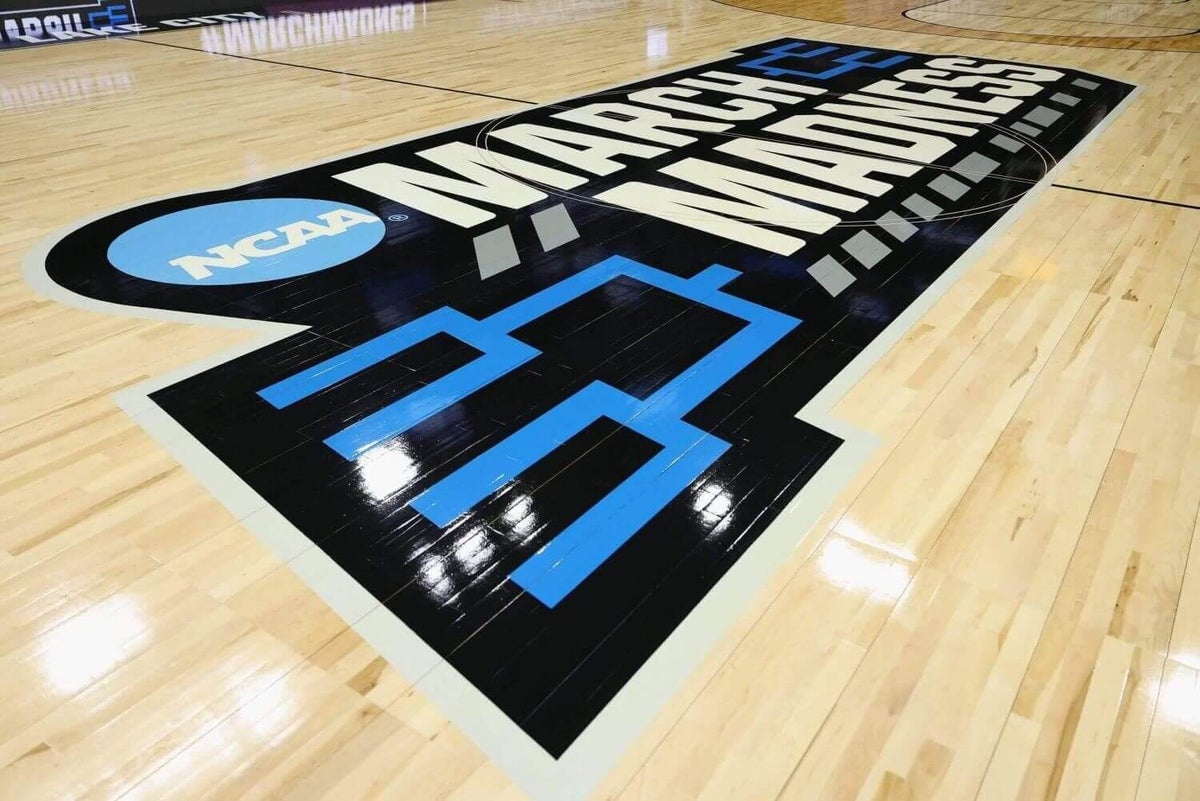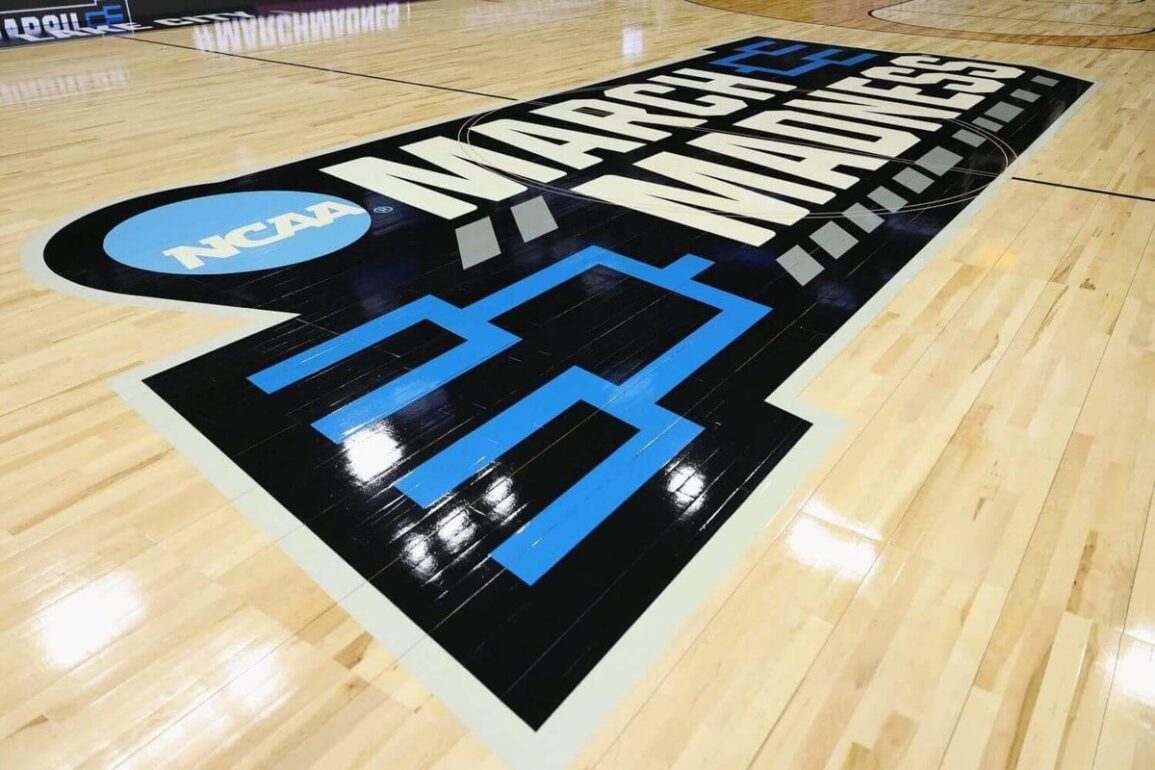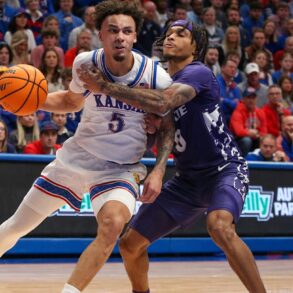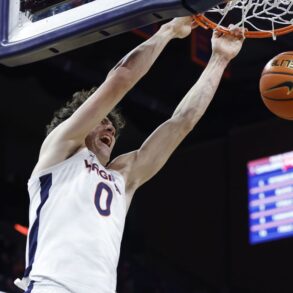
NASHVILLE, Tenn. — While a modest expansion of the NCAA basketball tournament seems to be on the horizon, the more radical change looming over the association and its crown jewel event at this week’s convention was who will be in charge of college sports in general and March Madness specifically.
With college sports in the midst of massive changes — and awaiting final approval from a federal judge of an antitrust lawsuit settlement that will pave the way for billions of dollars in direct payments from schools to athletes — a new governance structure is needed to accommodate the more professionalized parts of the NCAA’s membership.
Advertisement
An early-stage proposal, first reported on by Yahoo! Sports, from the so-called Power 4 conferences — the SEC, Big Ten, ACC and Big 12 — suggests the solution is handing over more control to that group, including management of NCAA championships.
“Well, we’ve been given autonomy on very specific issues. It was negotiated back, and I think we’ve used it well,” SEC commissioner Greg Sankey said Wednesday as he made the long and winding walk through the Opryland Convention Center from a Division I Council meeting to an NCAA business session. “We haven’t used (autonomy) actively in a while and think that should be extended.”
Sankey downplayed the notion that the Power 4 was looking to seize control of championship event management and structure — the one function the NCAA provides that has not been severely diminished in recent years, and a responsibility which in many ways binds an increasingly frayed association.
“There are a lot more issues out there than merely championships,” Sankey said.
In 2014, the NCAA voted to grant autonomy to the then-Power 5, which included the Pac-12 at the time. Autonomy allowed those conferences to make permissive rules in certain areas without the approval of the rest of Division I (comprising 28 conferences and more than 280 schools). The first thing the Power 5 did was pass a rule that allowed schools to increase the value of an athletic scholarship by a few thousand dollars in most cases to the cost of attendance. That had been a contentious issue within the NCAA for a while, as the smaller schools feared being put at a competitive disadvantage by schools flexing their financial might.
Now, if the House v. NCAA lawsuit settlement gets final approval in April, schools will be allowed to spend up to $20.5 million starting next year on athlete compensation. The difference between the richest tier of Division I schools and the rest has never been more stark.
Advertisement
With 1,100 member schools in three divisions, the NCAA needs to change the way it governs, and soon. The P4’s proposal to take further control is one of many options.
“We got a bunch of submissions from all kinds of people that we asked for, OK?” NCAA President Charlie Baker said after his state of the association address on Tuesday. “My own view, and I’ve said this publicly, I think there are a lot of things at the NCAA that need to be fixed. I’m a hard sell … that the biggest problem we have is we don’t do a good job running championships. I actually think that’s something we’re pretty good at.”
The NCAA has put together a working group to sort through various proposals and ideas for a new governance structure, with the idea of having something new in place by next school year.
Governance of college sports is not a topic that pulls in many fans, until it impacts the competition itself. That gets everybody’s attention.
“That one caught me by surprise,” Big East commissioner Val Ackerman said of the Power 4 managing Division I national championships. “What the NCAA, more than anything, is built around is the management of the championships. That’s their primary function is to manage 90 championships. The only thing they don’t manage is the CFP.
“So that one, I need to hear more about the idea around some takeover of NCAA championships.”
The thought of handing control of national championships over to the P4 is especially worrisome for the rest of Division I because access to those championships, and the millions of dollars in revenue that come with it, is often the lifeblood of their programs.
Dan Gavitt, the NCAA’s senior vice president of basketball, said who runs the tournament is not so much a concern as how.
“If there are things as a result of realignment, House settlement, change in governance structure that are needs that we need to consider meeting of the membership, including the (Autonomy 4), but including others, then we should be open-minded to how we evolve that,” he said. “And if that’s committee structure, if that’s format of championships, if that’s some revenue distribution around some of the things that they are going to make decisions about, then I think we should be open-minded about that.”
Advertisement
On the topic of expanding the basketball tournament, Gavitt said discussions are ongoing with three possible outcomes: adding four teams to the current 68-team bracket, adding eight teams, or no expansion.
“I’d say it’s not a foregone conclusion that the championships would expand,” Gavitt said.
There remain complications, most notably rising costs if more teams are added to the bracket. Gavitt declined to put a timetable on a decision but acknowledged that having about a year to implement changes would be helpful. The NCAA would have to expand the women’s basketball tournament by whatever number it expanded the men’s bracket.
As for a new NCAA governance structure, that would need to be in place way before a ball is kicked or tipped for the 2025-26 sports seasons.
Baylor president Linda Livingstone, whose school is part of the Big 12, said Tuesday that with Power 4 schools’ investments soaring, another iteration of autonomy is probably due. That doesn’t have to mean the end of a large Division I or a breakaway by the Power 4.
“I think we have a really good opportunity now where everybody’s bought into knowing that we need to rethink that decision-making model, that governance model in Division I,” she said. “And now the hard work to roll up our sleeves is to figure out what that is in the best interest of certainly the autonomy conferences but also other institutions outside of the autonomy conferences.”
(Photo: Christian Petersen / Getty Images)
This post was originally published on this site be sure to check out more of their content.










